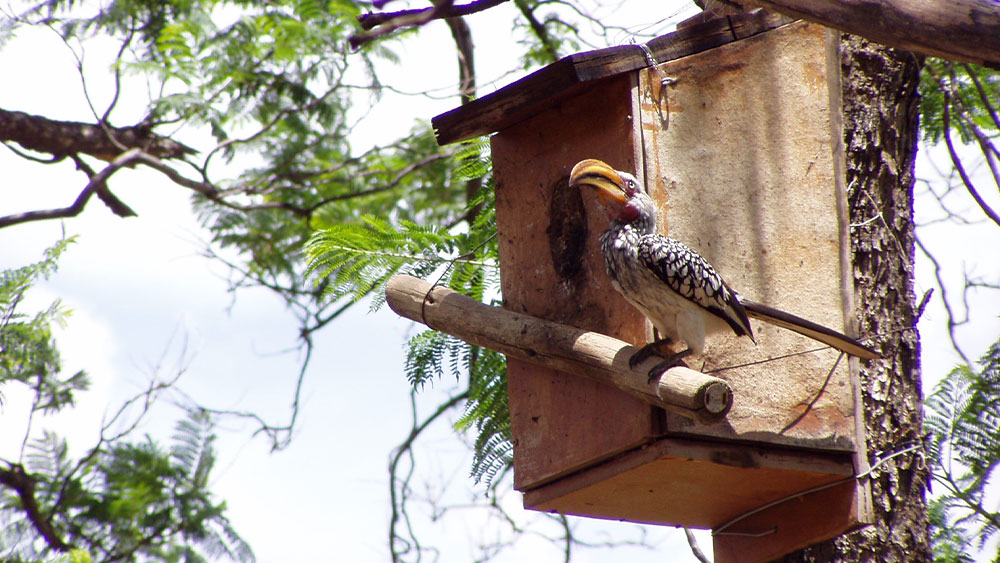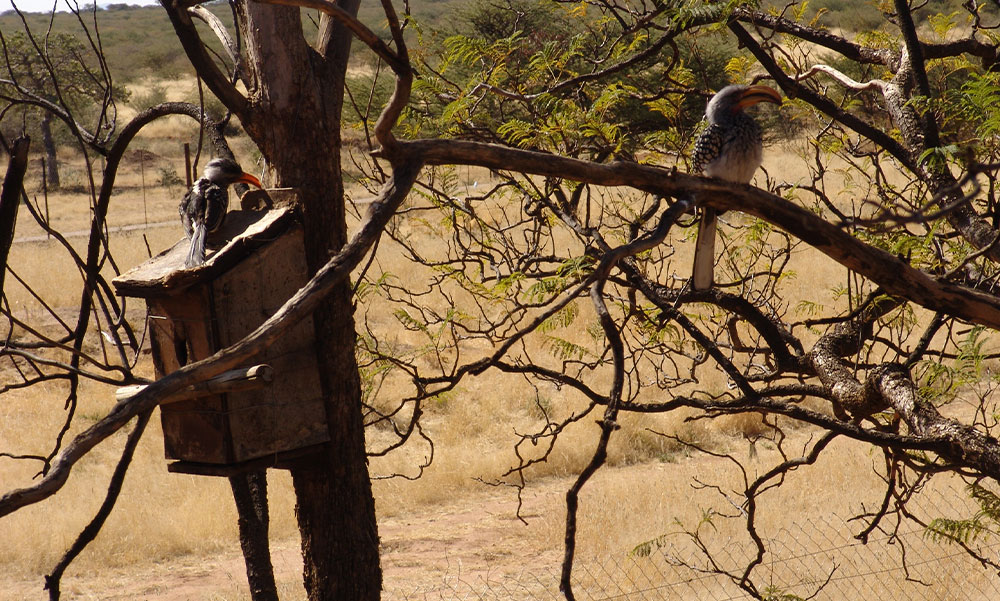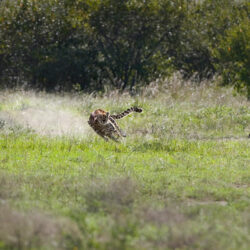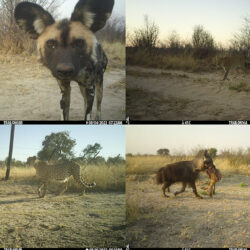Seeing Double – Hornbills at CCF Found Producing Two Nests in One Season
-

- by Brandy Morenko Campbell May 17, 2021

Summary of Double Brooding in Southern Yellow-Billed Hornbills Tockus leucomelas
Yellow-billed hornbills are medium-sized black and white birds with characteristic large yellow beaks found in southern Africa. Like nearly all hornbills, female yellow-billed hornbills seal themselves into their nest cavity and then molt all their flight feathers after they have laid all their eggs. Incubating and rearing their young, as well as regrowing all their flight feathers, in just one thee-month season is very energetically challenging for the male, who must provide all the nourishment for the female and chicks while she is sealed inside the nest.
Cheetah Conservation Fund (CCF) is home to three species of hornbills: the yellow-billed, the Damara, and the Monteiro’s. Dr. Mark Stanback, from Davidson College in North Carolina, USA, has installed approximately 200 nest boxes on the CCF farmland in the 6 years he has been coming to CCF. These boxes have provided a fantastic opportunity to gain a better understanding of these unusual birds that share the habitat with cheetahs.
Because of the relatively short length of the rainy season and the expense of producing young, double-brooding should be, and is, rare in Namibian hornbills. But during the wet summer of 2019/2020, Stanback noted that of the 43 females that nested in the spring, 10 double-brooded. How and why did some females manage to squeeze in two nests in one breeding season?

One hypothesis was that wetter summer breeding seasons result in greater food availability. While the 2019/2020 season was one of the wettest on record and may have contributed to their success, there was more to the story. Those females that had two nests did not have failed first nests, nor was achieved by birds with the better body condition. The missing critical piece to the puzzle was time. The females that had managed to rear two nests of fledglings in one season had started their first spring nest approximately a week sooner than the others. These few extra days seem to have allowed just enough time for the females to start their second nest. Interestingly, almost all those double-brooding females returned to the same nest.
It’s not known yet if other factors were involved in driving this decision by the female hornbill, such as experience, previous season’s success, her age, territory quality, or previous rainfall amounts. However, the yellow-billed hornbill population at CCF allows exclusive insights into the behaviors and environmental factors involved in the reproductive success of this species. Work such as this illustrates how essential it is that researchers continue to uncover intricacies of all sorts of species that make up the south African ecosystem, because these same influences also impact cheetah populations.
Related Reading
-
October 15, 2024
The Ecology of the Landscape Down to the Smallest Part




